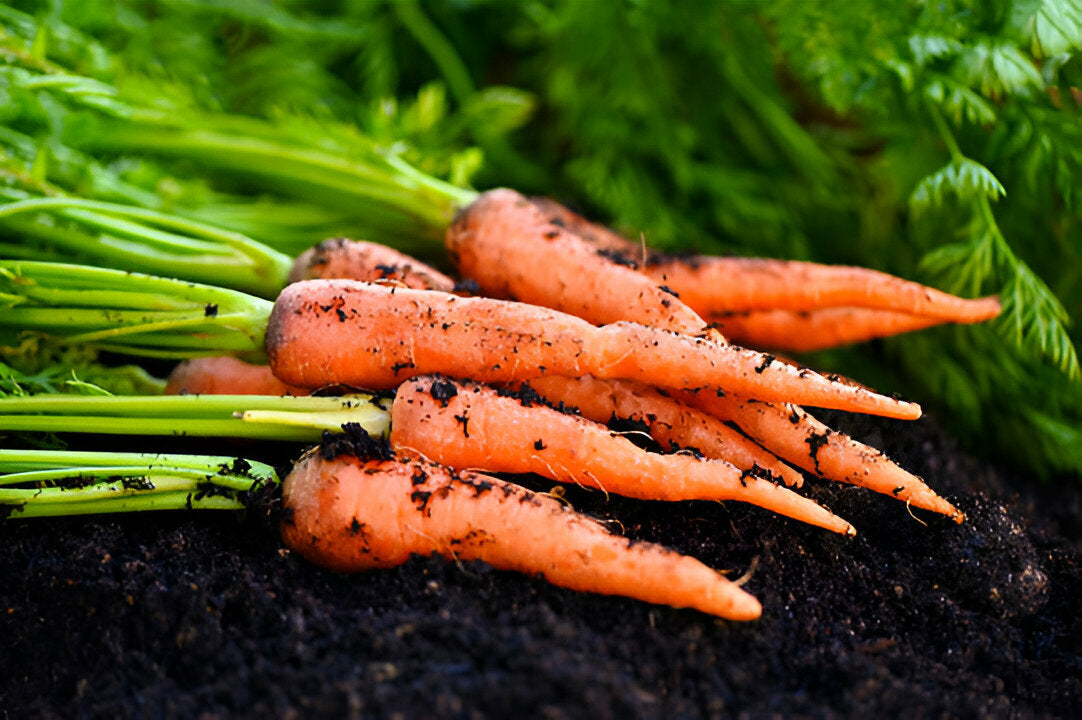
Grow Carrot in Pakistan – Moji Mall Guide
Share
Growing carrot (گاجر) at home is easier than you think. With the right timing, loose soil, and steady care, you can enjoy sweet, crunchy carrots right from your own garden or pots. Here’s a simple step-by-step guide to grow carrots successfully in Pakistan’s climate.
| Aspect | Details |
|---|---|
| Best Sowing Time | October to February |
| Ideal Temperature | 15°C to 25°C |
| Germination Time | 7–14 days |
| Transplant Time | Direct sowing (no transplanting needed) |
| Spacing | 2–3 inches between plants |
| Harvest Time | 70–90 days after sowing |
Step 1: Sow Seeds 🌱
When to Sow:
- Sow seeds from October to February, during the cooler months when temperatures stay mild.
- Ideal soil temperature for germination is 15°C to 25°C.
- Avoid sowing in hot months, as carrots prefer cool, steady weather.
How to Sow: Direct sow seeds into loose, deep soil enriched with compost. Sow seeds about 0.25 inch deep, thinly across the row or container.
Germination Tips: Seeds sprout in 7–14 days. Keep the soil consistently moist but avoid overwatering.
Step 2: Thin Seedlings 🌿
When to Thin: Once seedlings are 2–3 inches tall, thin them to leave 2–3 inches between each plant.
Why Thin: Proper spacing ensures carrots grow straight and healthy, without competing for space underground.
Aftercare: Water lightly after thinning to help remaining plants settle in.
Step 3: Care for Plants 🌞💧
Sunlight Needs: Carrots grow best in full sun, receiving at least 6 hours of direct sunlight daily.
Watering: Water deeply 2–3 times a week, keeping the soil evenly moist but not soggy. Dry soil can lead to cracked roots.
Feeding Schedule: Carrots don’t need heavy feeding. Add compost before sowing and lightly top up with compost around mid-growth if needed.
Step 4: Protect Plants 🐛
Common Pests: Watch for aphids and root-knot nematodes.
Natural Protection: Spray neem oil every 10–12 days (1 teaspoon neem oil + 1 liter water + few drops soap) to protect against pests naturally.
Common Problems:
- Forked or Twisted Roots: Caused by rocky, compacted soil — make sure soil is loose and stone-free.
- Tiny Carrots: Often from overcrowding — thin seedlings early.
- Yellow Leaves: May indicate water stress — adjust watering as needed.
Step 5: Harvest Roots 🥕
When to Harvest: Carrots are ready 70–90 days after sowing, when roots are about 1 inch thick or the shoulder tops look plump and colorful.
How to Harvest: Gently loosen the soil around the plant with a fork and pull out the carrots carefully.
Bonus Tip: Harvest younger carrots for sweeter, more tender roots — older carrots can get woody.
FAQs
Can I grow carrots in pots?
Yes, use deep pots (at least 12–14 inches deep) filled with loose, sandy soil for straight roots.
Why are my carrots small and thin?
Usually caused by overcrowding or poor soil preparation. Thin seedlings early and loosen soil well.
Can I transplant carrot seedlings?
No, carrots should be direct sown because transplanting damages their delicate taproots.
How long can carrots stay in the ground after maturing?
You can leave mature carrots in cool soil for a few extra weeks, but harvest before they become woody.
Do carrots need a lot of fertilizer?
No heavy feeding is needed. Compost-rich soil is usually enough for healthy carrot growth.
Growing carrots at home is a satisfying experience once you get the soil right and keep the moisture steady. With a little patience and care, you’ll enjoy sweet, crisp gajar — perfect for fresh juices, salads, and homemade halwa.

